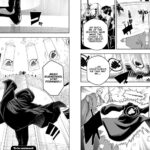The intense rivalry between Formula 1 drivers Niki Lauda and James Hunt in the 1970s serves as a powerful illustration of the adage, “A Wise Man Can Learn More From His Enemies.” The 2013 film Rush, directed by Ron Howard, vividly portrays this dynamic, offering a compelling narrative of competition, contrasting personalities, and ultimately, mutual respect. This cinematic masterpiece transcends the realm of sports, providing valuable insights into human nature and the potential for growth through adversity.
Two Sides of the Same Coin: Hunt vs. Lauda
Rush delves deep into the contrasting personalities of Hunt and Lauda. Chris Hemsworth embodies the charismatic and reckless James Hunt, a driver fueled by instinct and the thrill of the race. His performance captures Hunt’s flamboyant lifestyle and devil-may-care attitude, painting a picture of a man living life on the edge.
Daniel Brühl delivers a mesmerizing portrayal of Niki Lauda, the calculated and methodical Austrian driver. Lauda’s approach to racing is driven by precision and meticulous preparation, a stark contrast to Hunt’s impulsive style. Brühl masterfully captures Lauda’s intense focus and unwavering determination, showcasing a man driven by logic and the pursuit of excellence.
This fundamental difference in their personalities is the engine of their rivalry. Hunt’s free-spirited nature clashes with Lauda’s disciplined approach, creating friction both on and off the track. Their contrasting styles, however, ultimately force each driver to confront their own weaknesses and acknowledge the strengths of their opponent.
The 1976 German Grand Prix: A Turning Point
The film’s climax centers around the infamous 1976 German Grand Prix, where Lauda suffered a near-fatal crash. This harrowing event serves as a pivotal moment in the rivalry, forcing both drivers to re-evaluate their priorities and perspectives.
The film’s depiction of the crash is both visceral and deeply affecting, highlighting the inherent dangers of Formula 1 racing. The aftermath of the accident showcases Lauda’s incredible resilience and determination to return to the track despite severe injuries. This act of defiance inspires even Hunt, demonstrating the profound impact of Lauda’s unwavering spirit.
Learning from the Enemy: Respect and Growth
While initially fueled by animosity, the rivalry between Hunt and Lauda eventually evolves into a grudging respect. Each driver recognizes the other’s unique talents and unwavering commitment to the sport. “A wise man can learn more from his enemies” becomes more than just a proverb; it transforms into a lived experience for both men. Lauda’s meticulous approach challenges Hunt to refine his skills, while Hunt’s raw talent forces Lauda to acknowledge the importance of instinct and passion.
The film concludes with a poignant reflection on their relationship, highlighting the enduring legacy of their rivalry. By showcasing the real-life photographs of Hunt and Lauda, Rush emphasizes the authenticity of their story and the lasting impact they had on each other.
Conclusion: A Legacy of Rivalry and Respect
Rush offers a powerful portrayal of how competition can foster growth and mutual respect. The film exemplifies the idea that “a wise man can learn more from his enemies,” showcasing how even the most bitter rivals can learn valuable lessons from each other. The enduring legacy of Hunt and Lauda serves as a testament to the transformative power of rivalry and the potential for personal evolution through adversity. The film leaves a lasting impression, reminding us that true wisdom often comes from unexpected sources.

